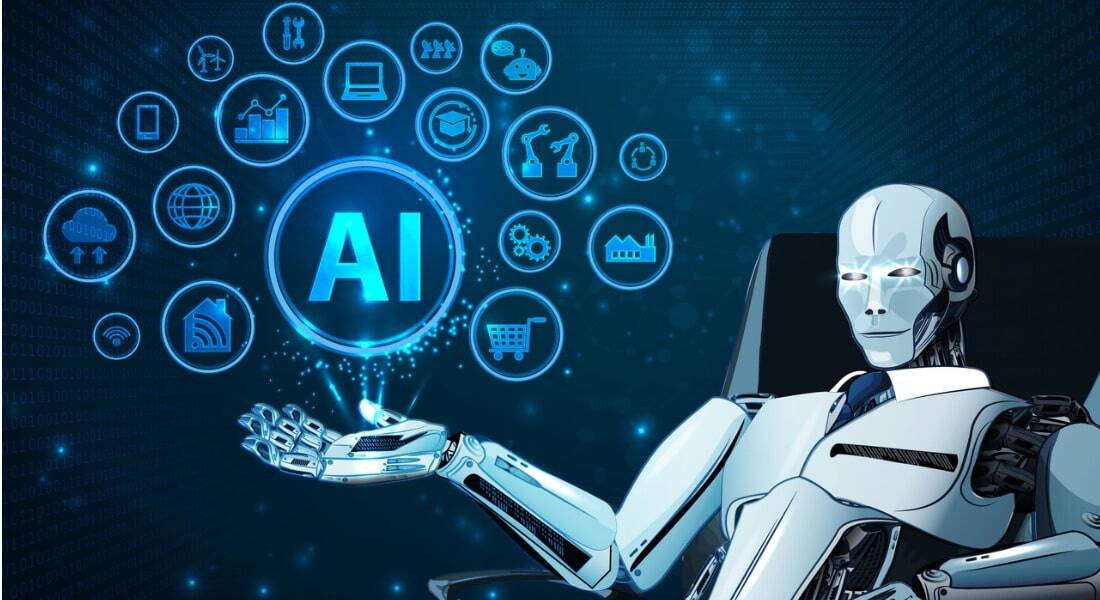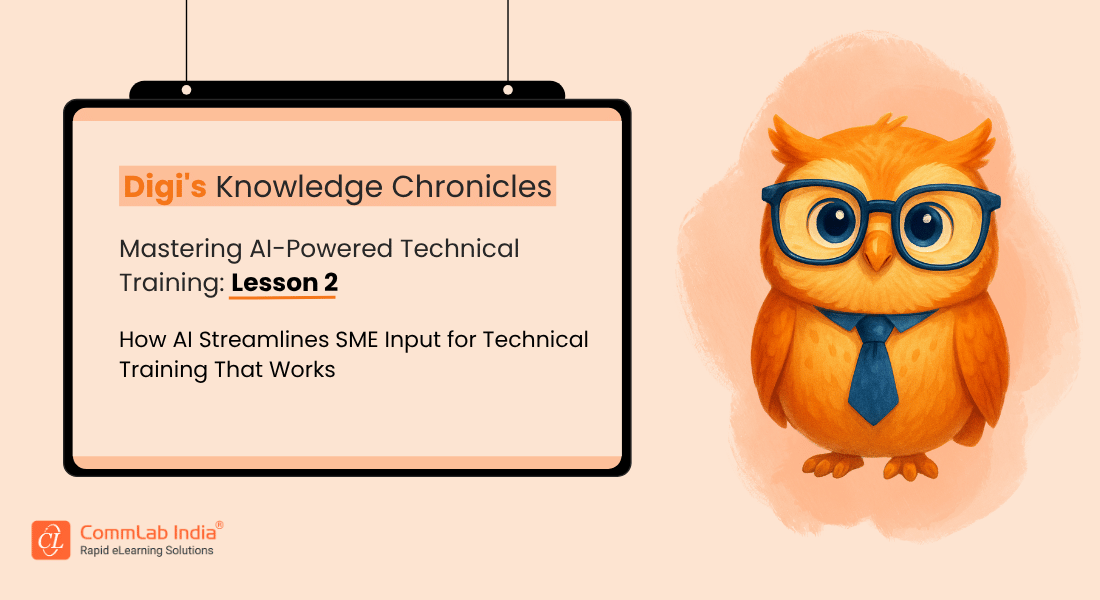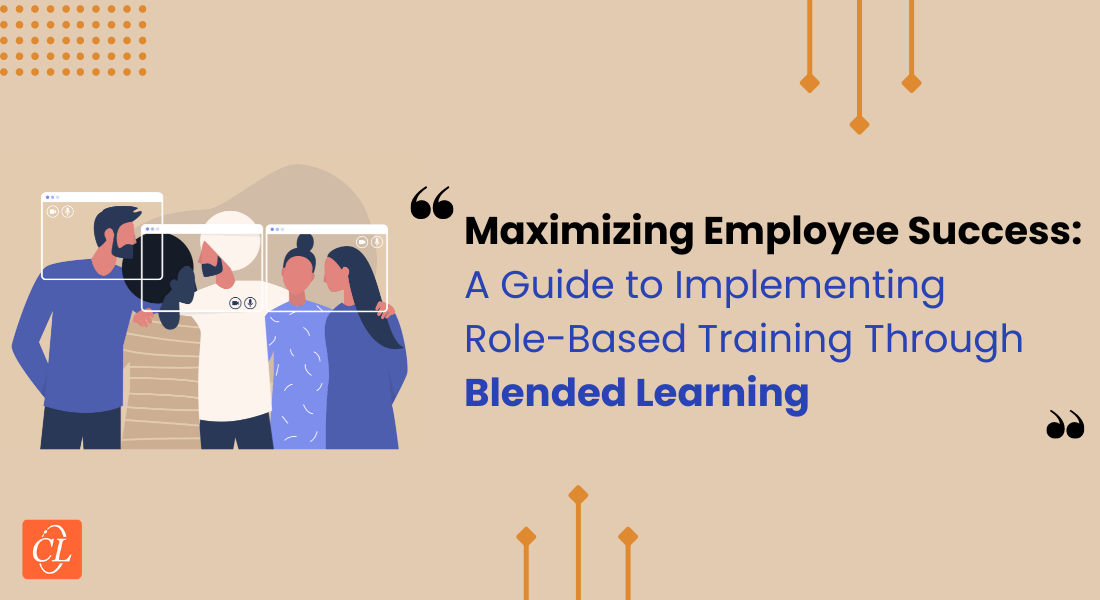The 3-Touchpoint SME Model in AI-Powered Technical Training for Field Teams

Subject Matter Experts (SMEs) are the cornerstone of technical training. Their real-world knowledge ensures training content is accurate, relevant, and practical. But involving them too heavily—or inefficiently—can backfire. Many L&D teams struggle with delayed reviews, unclear expectations, and unproductive back-and-forth that derails timelines and frustrates everyone involved.
→ Download eBook: AI-Powered Technical Training
Nowhere is this more problematic than in technical training for sales and service staff. These learners rely on fresh, detailed, and scenario-based training that reflects current product capabilities, common issues, and customer interactions. But SMEs are typically juggling core responsibilities—engineering, customer success, compliance—and can’t drop everything to help build courses.
That’s where the 3-Touchpoint Model comes in.
Paired with AI tools, this model gives you a way to collaborate effectively with SMEs while respecting their time and accelerating development.

Table Of Content
- Why Doesn’t Traditional SME Involvement Work?
- What Is the 3-Touchpoint Model?
- How Does This Model Improve Sales & Service Training?
- What Is the AI Advantage?
- How Does This Work for a Consumer Electronics Company?
- What Are Pro Tips to Maximize This Model?
Why Traditional SME Involvement Doesn’t Work
The old model usually looks like this:
- A kickoff meeting to explain the training scope
- Weeks of waiting for documentation or slide decks
- Script drafts, long email threads, and multiple revisions
- Late feedback or SME unavailability
- Final review panic before go-live
This leads to burnout, rushed technical training, or in some cases, outright abandonment. Sales and service staff are left with outdated materials, or training launches after the product hits the field—when it’s already too late.
The problem? Too many touchpoints and unclear expectations.
Discover how to take your SME to the next level with strategies designed for growth and success.
The 3-Touchpoint Model: A Smarter Approach
Smarter SME Collaboration in AI-Powered Training for Field Teams
Here’s a 3-Touchpoint Model:
- Touchpoint 1: Knowledge Capture Interview (30–45 minutes)
- Touchpoint 2: Prototype Review (20–30 minutes)
- Touchpoint 3: Final Validation (15 minutes)
Instead of involving SMEs at every step, this lean model structures their input into three well-defined phases:
Touchpoint 1: Knowledge Capture Interview (30–45 minutes)
This is the anchor session. You:
- Interview the SME on a recorded call
- Focus on tasks, workflows, common issues, and outcomes
- Ask about learner mistakes, important warnings, and decision points
Use AI tools like Otter.ai or Fireflies to transcribe the call. Then use ChatGPT to extract:
- Learning objectives
- Quiz questions
- Microlearning scripts
- Roleplay scenarios
The SME talks once. AI handles the first draft.
Touchpoint 2: Prototype Review (20–30 minutes)
Instead of reviewing text-heavy documents, SMEs review:
- Short video drafts via Vyond or Synthesia
- Annotated slides or simulations
- Clickable storyboards
They react to content that feels real, providing faster, more accurate feedback. You avoid subjective debates about phrasing or formatting.
Touchpoint 3: Final Validation (15 minutes)
This is a quick review session to confirm technical accuracy and ensure no deal-breakers exist. SMEs sign off—or request minor corrections. Because they’ve seen the content evolve in prototype form, final review is fast.
Why This Model Works for Sales & Service Training
According to Forbes, SMEs are integral to collaborative learning within organizations. Their involvement brings rich experience, nuanced problem-solving, and organizational knowledge that others can trust.
Sales and service staff have diverse, field-facing roles. Their training needs to:
- Be job-task aligned
- Reflect current product and customer environments
- Address real-life edge cases
The 3-touchpoint model works because:
- SMEs are only involved when their input is most valuable
- Training development becomes faster and more focused
- Reviews are easier, because content is visual and contextual
And when paired with AI tools, L&D teams can go from SME interview to final training module in under 2 weeks.
The AI Advantage
Let’s not forget: this model works best when powered by AI.
- Transcription tools capture SME sessions automatically
- ChatGPT or Claude generate content from transcripts
- Vyond and Synthesia create visual assets from scripts
- Smartcat or DeepL translate for global rollouts

Example: Consumer Electronics Company
An L&D team at a global electronics firm needed to train their retail sales staff on a new product line. Product managers were swamped. Using the 3-touchpoint model:
- One SME call produced 5 video scripts
- Drafts were reviewed and finalized in Synthesia
- Translated modules were rolled out in 6 languages
Time from first meeting to launch? 12 business days. Post-launch sales team accuracy improved by 28% on knowledge checks.
Pro Tips to Maximize the Model
- Structure your interviews. Use a consistent question set that focuses on tasks, not theory.
- Prototype fast. Use animation or narrated walkthroughs to get tangible drafts in front of SMEs.
- Automate the logistics. Use Calendly, reminders, and recorded calls to streamline meetings.
Final Thought
SMEs are not instructional designers. They shouldn’t have to write scripts or sit through hours of reviews. Their value is in the insights they bring—not the documents they edit.
With the 3-Touchpoint Model, you create a respectful, productive collaboration that gets training into the hands of sales and service teams faster—and in a format they actually use.
This is smarter, leaner technical training. Powered by AI. Made for impact.







